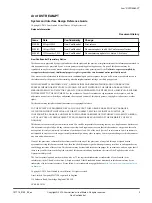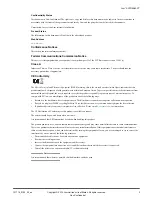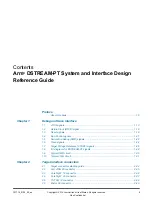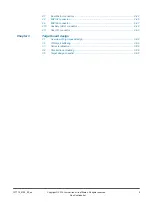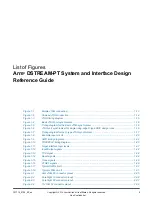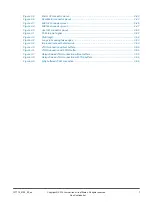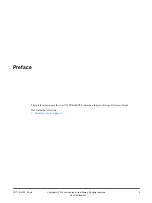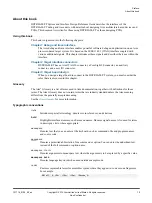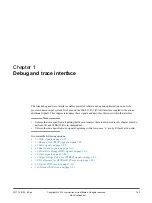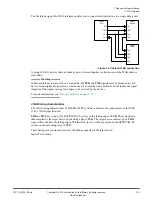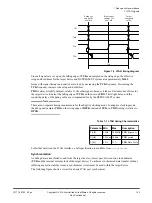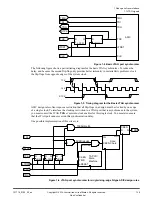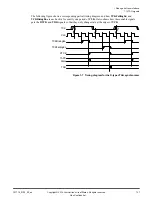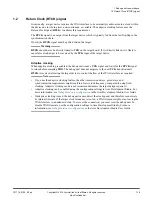
Confidentiality Status
This document is Non-Confidential. The right to use, copy and disclose this document may be subject to license restrictions in
accordance with the terms of the agreement entered into by Arm and the party that Arm delivered this document to.
Unrestricted Access is an Arm internal classification.
Product Status
The information in this document is Final, that is for a developed product.
Web Address
Conformance Notices
This section contains conformance notices.
Federal Communications Commission Notice
This device is test equipment and consequently is exempt from part 15 of the FCC Rules under section 15.103 (c).
Class A
Important: This is a Class A device. In residential areas, this device may cause radio interference. The user should take the
necessary precautions, if appropriate.
CE Conformity
The
Waste Electrical and Electronic Equipment
(WEEE) marking, that is, the crossed out wheelie-bin figure, indicates that this
product must not be disposed of with general waste within the European Union. To prevent possible harm to the environment from
uncontrolled waste disposal, the user is required to recycle the product responsibly to promote reuse of material resources. To
comply with EU law, you must dispose of the product in one of the following ways:
•
Return it to the distributer where it was purchased. The distributer is required to arrange free collection when requested.
•
Recycle it using local WEEE recycling facilities. These facilities are now very common and might provide free collection.
•
If purchased directly from Arm, Arm provides free collection. Please e-mail
The CE Declaration of Conformity for this product is available on request.
The system should be powered down when not in use.
It is recommended that ESD precautions be taken when handling this product.
The product generates, uses, and can radiate radio frequency energy and may cause harmful interference to radio communications.
There is no guarantee that interference will not occur in a particular installation. If this equipment causes harmful interference to
radio or television reception, which can be determined by turning the equipment off or on, you are encouraged to try to correct the
interference by one or more of the following measures:
•
Ensure attached cables do not lie across any sensitive equipment.
•
Reorient the receiving antenna.
•
Increase the distance between the equipment and the receiver.
•
Connect the equipment into an outlet on a circuit different from that to which the receiver is connected.
•
Consult the dealer or an experienced radio/TV technician for help.
Note
It is recommended that wherever possible shielded interface cables be used.
Arm
®
DSTREAM-PT
101714_0100_02_en
Copyright © 2019 Arm Limited or its affiliates. All rights reserved.
3
Non-Confidential


